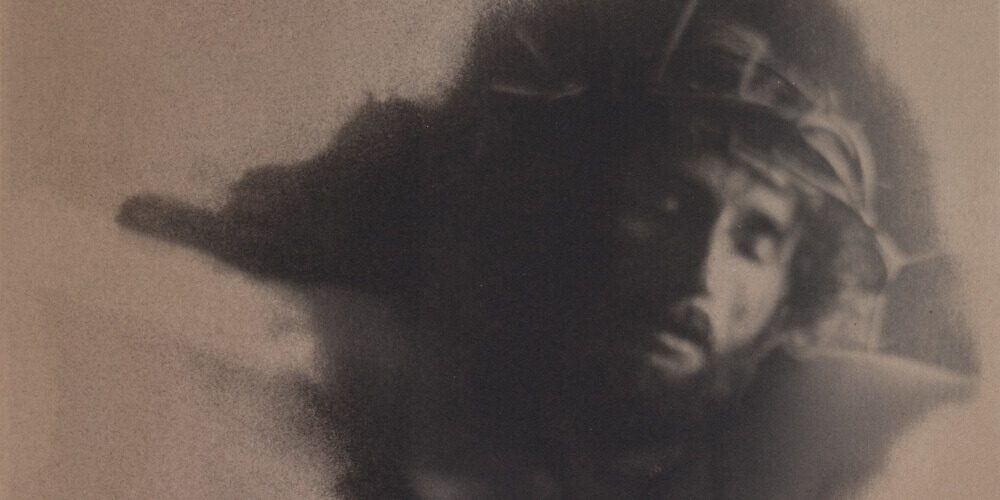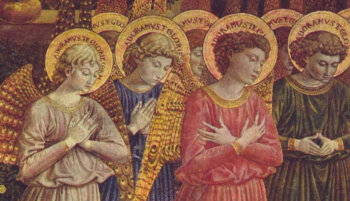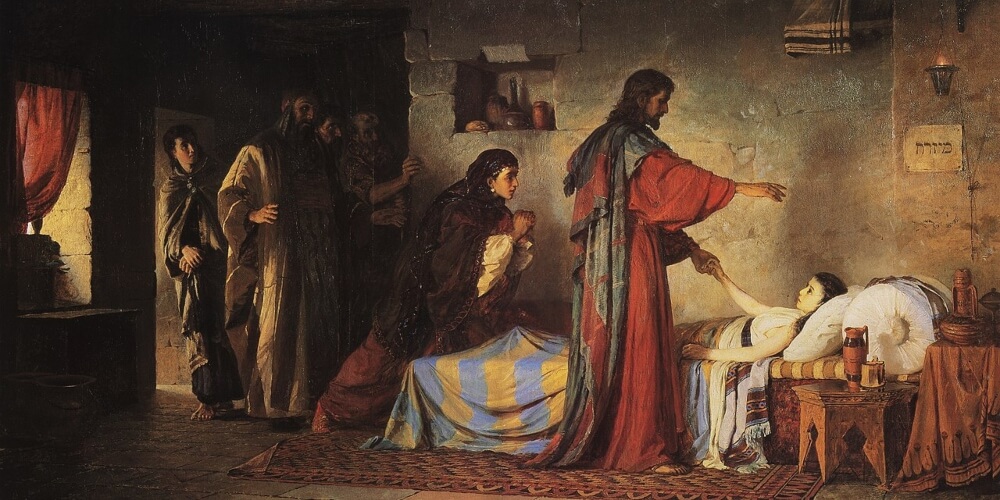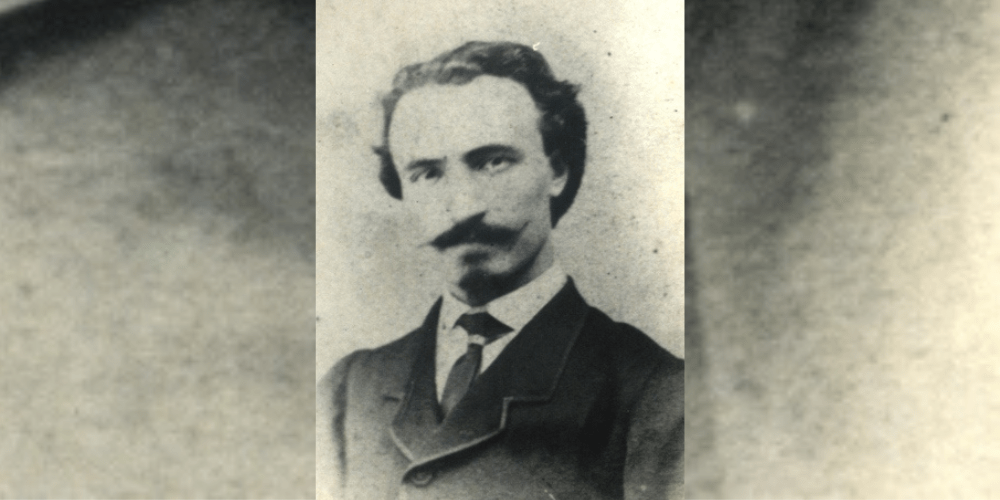
“My soul is sorrowful even unto death…”
Jesus (Matthew 26:38)
We assume—naturally enough—that Good Friday was the day of Jesus’ greatest suffering.
The brutality of His scourging, cross-carrying, and crucifixion staggers our imagination.
Hence the Church Fathers, saints, and theologians urge us to meditate on the Passion of Christ not only for our spiritual benefit, but to deepen our awe and gratitude for His ineffable love in “rejoicing as a giant to run the way” of the Cross (cf. Psalm 18:6, DRA translation).
But here’s a question for us to ponder.
Was the physical pain of Jesus’ passion and crucifixion actually His greatest suffering?
The answer is—most likely, if astonishingly—no.
We’ll consider this more closely in this article.
We’ll reflect on the reality of Jesus’ interior sufferings with the guidance of a saint (St. John Henry Newman) and a doctor (Dr. Thomas W. McGovern).
Spiritual Pain: Greater Than Physical Pain
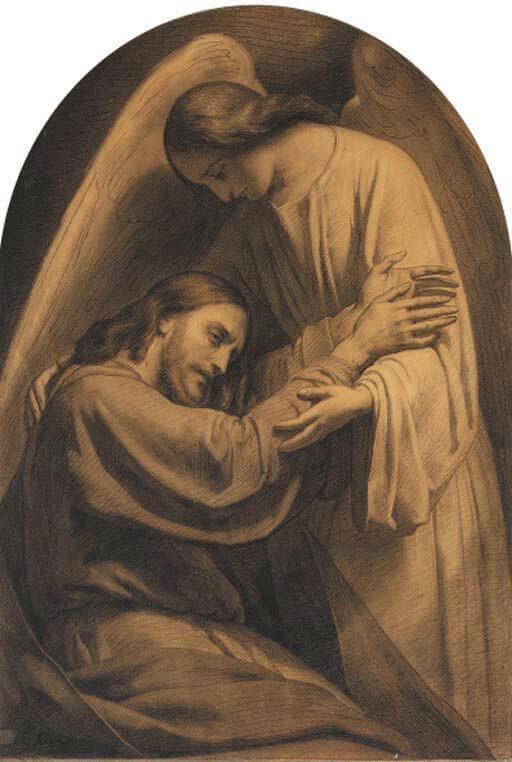
It seems a universal human experience that interior suffering (emotional, mental, spiritual) is greater than physical suffering.
With no physical limb or organ to “register” pain and its acuteness, there is a mysterious, intangible, immeasurable, crucifying anguish that racks the hearts and minds of human beings.
Interior suffering may be accompanied by physical pain, or intensified by it, but always seems to surpass it.
Betrayal at the hands of a loved one…the rejection of a parent…profound loss…regret…psychological abuse…mental illness…how many of us would gladly exchange all these for a “mere” physical injury, or painful surgery, or other physical trauma?
Think of a particular suffering of your own. Perhaps it has been the greatest anguish in your life. Or the longest-running. Has your heart ever been crucified?
Now consider the darkness that Jesus deliberately takes upon Himself as He leaves Jerusalem after the Last Supper, climbs the hill, and enters the shadowy Garden of Gethsemane.
No fists, no whips, no clubs, no thorns, no nails await Him in that quiet grove of olive trees.
And yet, says St. John Henry Newman,
The agony, a pain of the soul, not of the body, was the first act of His tremendous sacrifice…
St. John Henry Newman, Discourse 16: Mental Sufferings of Our Lord in His Passion
With those words in mind, let’s walk with Jesus through the dark.
Let’s draw near to His approaching agony in the garden.
Anticipation and Futility: Worse Than the Pain Itself
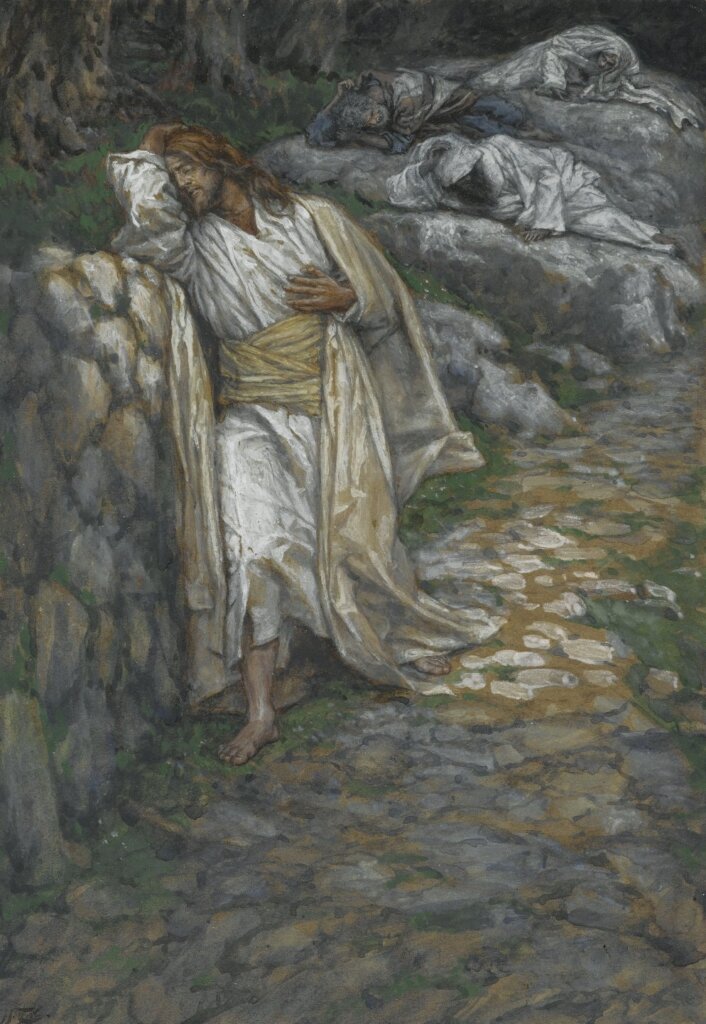
What did Jesus go to meet in the Garden?
Countless theologians and saints have reflected upon it:
His impending passion. His ultimate sacrifice, costing no less than the last drop of His blood. The rejection of God by men. The greatest sin ever committed: the murder of Life Himself, the Messiah, the Son of God.
He comes to the Garden to confront and take upon His sacred shoulders every sin that ever has or ever will be committed, no matter how filthy, no matter how slight.
Every sin committed against you. Every sin you’ve ever committed.
How many people have sinned, and been sinned against? How many more souls are still to be born, to sin, and to be harmed by others’ sin?
Now try to fathom the unbelievable weight of this burden.
It isn’t possible.

And as if that staggering reality were not enough, there is more.
Jesus, Who is God, knows that—in spite of shouldering this sickening mass of sin and consummating Himself completely for it and for those who committed this sin…in spite of “becoming sin” on our behalf even though He, purity itself, “knew not sin” (2 Corinthians 5:21) …in spite of all this, Jesus knows that many, many people will reject Him and His sacrifice and enter eternal damnation. Forever. Of their own free will.
In other words, Jesus sees what we would call (from an earthly perspective) the futility of His actions for certain souls. Such futility that—again, from an earthly perspective—would only naturally beg the question: “What’s the use? Why bother? Why suffer for nothing?”
Who but the Son of God could confront such darkness?
And He does so with perfect intention and self-command. The shadow does not creep up on Him—He goes to meet it.
You see how deliberately He acts; He comes to a certain spot; and then, giving the word of command, and withdrawing the support of the God-head from His soul, distress, terror, and dejection at once rush in upon it. Thus He walks forth into a mental agony with as definite an action as if it were some bodily torture, the fire or the wheel.
There, then, in that most awful hour, knelt the Saviour of the world, putting off the defences of His divinity, dismissing His reluctant Angels, who in myriads were ready at His call, and opening His arms, baring His breast, sinless as He was, to the assault of His foe,—of a foe whose breath was a pestilence, and whose embrace was an agony.
There He knelt, motionless and still, while the vile and horrible fiend clad His spirit in a robe steeped in all that is hateful and heinous in human crime, which clung close round His heart, and filled His conscience, and found its way into every sense and pore of His mind, and spread over Him a moral leprosy, till He almost felt Himself to be that which He never could be, and which His foe would fain have made Him.
Oh, the horror, when He looked, and did not know Himself, and felt as a foul and loathsome sinner, from His vivid perception of that mass of corruption which poured over His head and ran down even to the skirts of His garments!
St. John Henry Newman, Discourse 16: Mental Sufferings of Our Lord in His Passion
The Spiritual Suffering of the God-Man

Of course, we know that it is only human beings—rational beings—who are capable of experiencing such pain. We have the consciousness, the “self-awareness,” that makes it possible.
St. John Henry Newman refers to this as the “inward sensibility” of pain.
He reminds us that the sufferings of Jesus in His body originated in His soul. He insists that
it was not the body that suffered, but the soul in the body; it was the soul and not the body which was the seat of the suffering of the Eternal Word.
Consider, then, there is no real pain, though there may be apparent suffering, when there is no kind of inward sensibility or spirit to be the seat of it.
A tree, for instance, has life, organs, growth, and decay; it may be wounded and injured; it droops, and is killed; but it does not suffer, because it has no mind or sensible principle within it…
Had we no spirit of any kind, we should feel as little as a tree feels; had we no soul, we should not feel pain more acutely than a brute feels it; but, being men, we feel pain in a way in which none but those who have souls can feel it.
St. John Henry Newman, Discourse 16: Mental Sufferings of Our Lord in His Passion
This is why the human heart can undergo incredible trauma. It’s why human beings suffer in a way that is absolutely distinct from animal suffering.
The awareness of suffering for human beings means
that we cannot help thinking of it, while we suffer it. It is before us, it possesses the mind, it keeps our thoughts fixed upon it.
Whatever draws the mind off the thought of it lessens it; hence friends try to amuse us when we are in pain, for amusement is a diversion. If the pain is slight, they sometimes succeed with us; and then we are, so to say, without pain, even while we suffer.
St. John Henry Newman, Discourse 16: Mental Sufferings of Our Lord in His Passion

“Now apply this,” continues St. John Newman, “to the sufferings of our Lord…”
[for] wherever this gift of [consciousness] is found, there pain is possible, and greater pain according to the quality of the gift.
St. John Henry Newman, Discourse 16: Mental Sufferings of Our Lord in His Passion
St. Newman’s point is that greater pain is possible according to the quality of consciousness.
This is how we know that the man who suffered most—more than any other human being ever has or ever will—was the God-man, Jesus Christ.
Having a divine capacity for pain, He could suffer more than anyone.
Knowing this, we are ready to consider how this interior suffering manifested in Him physically that night in the Garden of Gethsemane.
Jesus, Adrenaline, and the Bloody Sweat: A Doctor’s Explanation
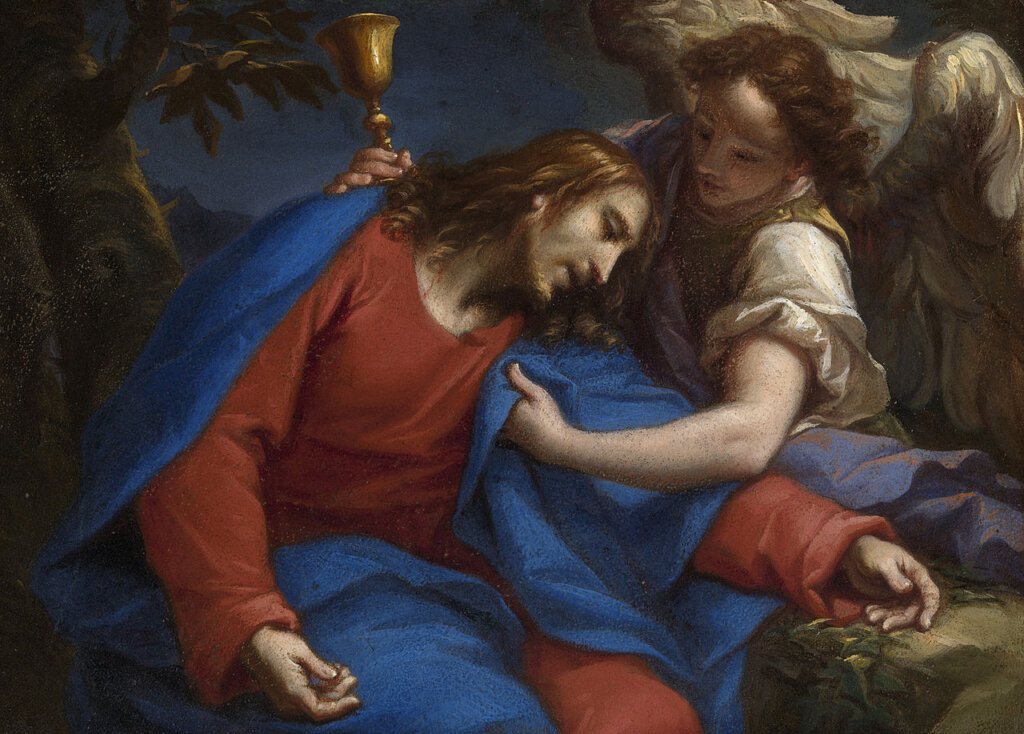
St. Luke, a physician as well as an evangelist, wrote in his gospel that Jesus’ sweat “became as drops of blood, trickling down upon the ground” (Luke 22:44).
This bloody sweat has baffled and intrigued readers of the Gospel (and doctors) ever since it was written.
Note: the bloody sweat is not 1st-century ignorance or misapprehension.
It is a rare condition known as hematidrosis, which has eluded proper medical understanding for many years. Only recently has it been more accurately observed and defined, as Dr. Thomas MocGovern tells us in his book What Jesus Suffered: A Doctor’s Journey Through the Passion.
First, Dr. McGovern reminds us of Jesus’ interior suffering, and launches from this into a quick explanation of the bloody sweat:
It appears that [Jesus] was living at the utmost of his human capacities during this struggle, and while doing so, something like great (Greek, hósei) drops of blood fell from him to the ground.
…there is a long history of reports—rare though they have been—regarding a condition called hematidrosis (bloody sweat).
…The most detailed pre-1996 report describes an 11-year-old girl in 1918 who would exude pink froth from her forehead during extreme stress; microscopically, the froth contained red and white blood cells at a lower concentration than in blood.
…But are these cases of the same thing Jesus endured in the Garden of Gethsemane? If we define hematidrosis…as “one or more episodes of spontaneous, bloody [fluid coming out] of non-traumatized skin” then we are talking about the same phenomenon.
To be clear, nobody knows for sure what causes hematidrosis…[but it’s] highly unlikely that blood vessels could burst [through] sweat glands. [Instead] the release of adrenaline was…important in the condition…
…hematidrosis occurs in a vanishingly small percentage of the world’s population in response to surges of adrenaline in their bodies.
Some authors believe that after Jesus accepted the Father’s will, his sympathetic nervous system calmed down and therefore stopped releasing high levels of adrenaline into his bloodstream…
With less adrenaline present, the blood vessels opened up wider to allow more blood flow into his skin. This provided more blood that could exude from his skin after his emotional and spiritual torment had passed.
Dr. Thomas W. McGovern, What Christ Suffered

Many (but not all) victims of hematidrosis experience it as a result of psychological trauma or severe mental disturbance.
When we consider Jesus and what provoked His bloody sweat that Thursday night, our minds are opened to the magnitude of His suffering at Gethsemane—a suffering that may exceed the blows and lacerations of His executioners the next day.
There was no one to beat Him, no one to lash Him, and yet my sin and yours caused Him more suffering than a physical blow ever could.
Knowing this, what will we do?
Will we be numbered among those who reject Jesus and the sacrifice He so earnestly desired to make that He described Himself as being “constrained until it is accomplished”? (Luke 12:50)
God forbid we should reject Him!
More hopefully speaking, there is something we can do here and now: we can console Jesus in the Garden, even though His agony there took place two thousand years ago.
How You Can Console Jesus in the Garden

Catholic writers and theologians, such as Pope Pius XI, have written about how we can console Jesus for His sufferings in the past.
In other words, our acts of consolation can transcend the constraints of time and be experienced by Him in Jerusalem two thousand years go.
This is unofficially known as “retroactive consolation” (as Fr. Michael Gaitley calls it in his book Consoling the Heart of Jesus).
If this seems odd, remember what we learned earlier in this article: that Jesus’ agony and Passion were the result not only of past sins but of sins that had not yet been committed. His sacrificial offering atoned for the past, present, and future crimes of mankind against their Creator.
In the same way, Jesus could foresee the love souls would have for Him, the penances they would make, and the consolation they would offer Him long before these holy acts were actually made.
He could experience this consolation while He confronted that darkness in the Garden and while His drops of blood fell to the ground.
So what can you do?
You can, in your prayer and acts of sacrifice, offer up the intention of consoling Christ suffering at Gethsemane. You can sit in His presence at Eucharistic Adoration during your Holy Hour and “keep watch with Him” as He requested in Matthew 26:40.
And you can know that, two thousand years ago, He foresaw your loving prayers…your vigilant heart…your sacrifice…and from them, received consolation in His darkest hour.
All praise and glory to Jesus Christ and His superabundant grace.

